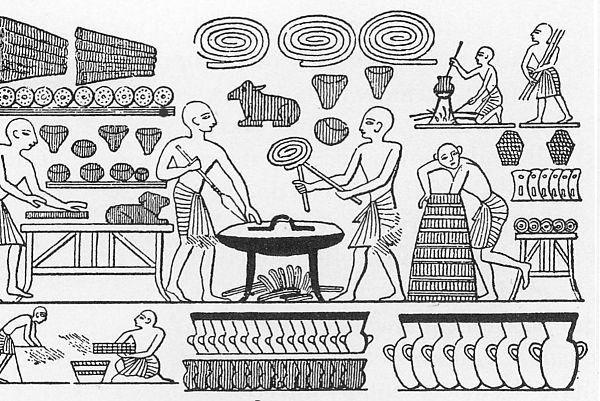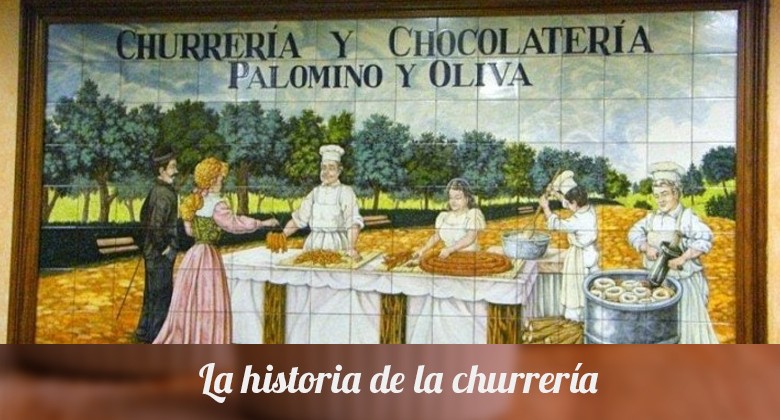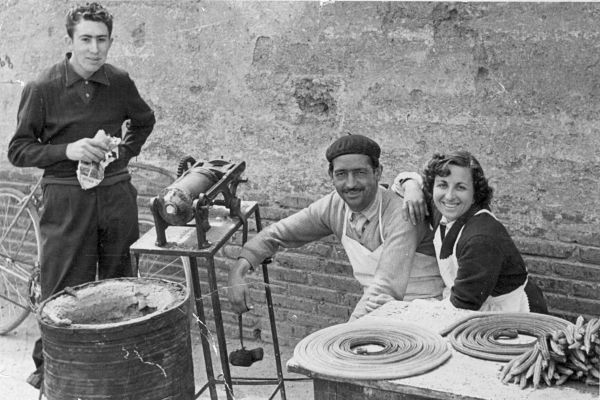The Origin of Churros

Given the age of the ingredients (flour, water, salt, oil and sometimes yeast) and the simplicity of the recipe, it is logical to think that the origin of churros are lost in the mists of time. We can find some examples dating back to Ancient Egypt. In the bakery scenes of the tomb of Ramesses III (1184 – 1153 BCE), you can see a spiral shaped product being prepared in what looks like a pan over heat. Unfortunately, these representations in the form of frescos have been lost and we only know of their existence thanks to drawings made before they disappeared (1).
Nowadays we can find many similar products in Arab countries, which makes us think of that common and ancestral origin, associated with Mediterranean culture. In this photo we can see “Mushabbak” and “Oo’waymat”, two typically Lebanese products which are similar to our porras.
According to one theory, it was the shepherds that first made this fried dough because they didn’t have ovens in the countryside to bake bread. Also, looking at the etymology of the word churro, it may be related to the type of sheep of the same name.
Some time ago, we found out that there is a reference to this product in the archive of Simancas (Valladolid) in a recipe book of Elizabethan or Poor Claire nuns, dating back to 1597 and that these recipes would have been gathered by a Benedictine monk. However, we haven’t been able to locate the exact document.

The first document we have proof of, and which appears to be related to this profession, is dated 1621, in which Pedro Velasco, from the ‘alojeros’ guild, asks for a increase in prices of the products it makes from 14 to 18 maravedís (old Spanish coins) given the increase in price of flour and oil (2).
‘Alojeros’ were street sellers of drinks (called ‘aloja’) at that time, as well as dried fruits, biscuits, etc…. That’s how they sold and made fried dough, for many years, on the street with a small oven and a folding table that served as a counter.
The fried dough was called “frutas de sartén” (literally pan fruits), “frutas de jeringa” (syringe fruits) or fritters and there is a brief reference to these products in the famous book “Arte de Cocina, pastelería, bizcochería y conservería” (The Art of Cooking, Pastry Making, Cake Making, and Preserving) in 1623 by the King’s chef, Francisco Martínez Montiño…(3) And buñolerías, as the bakeries were called that made these fried dough recipes in that era.

The guild of ‘alojeros’ appears joined to the guild of ‘buñoleros’ (fritter makers) until 1806. During the 17th, 18th and 19th centuries, there is a large increase in the request of licences for ‘buñolerías’ or fritter makers, and strangely 3 or 4 licences were sometimes requested for the same or different places, giving an idea of the strength of the business and the existence of small networks of fritter makers.
1887 is the first time we find a document using the term “Fábrica de churros” (Churros factory) in which Mariano Atienza Montoya applies for a licence in Madrid. The names ‘buñolería’ and ‘churrería’ are synonymous and one name or the other is used depending on the applicant’s preferences (4).

Churros, as they are now called, have travelled from Spain to other countries due to cultural influences, such as Latin America, and/or geographical influences and are currently known by this name all over the world… But that’s another story altogether.
